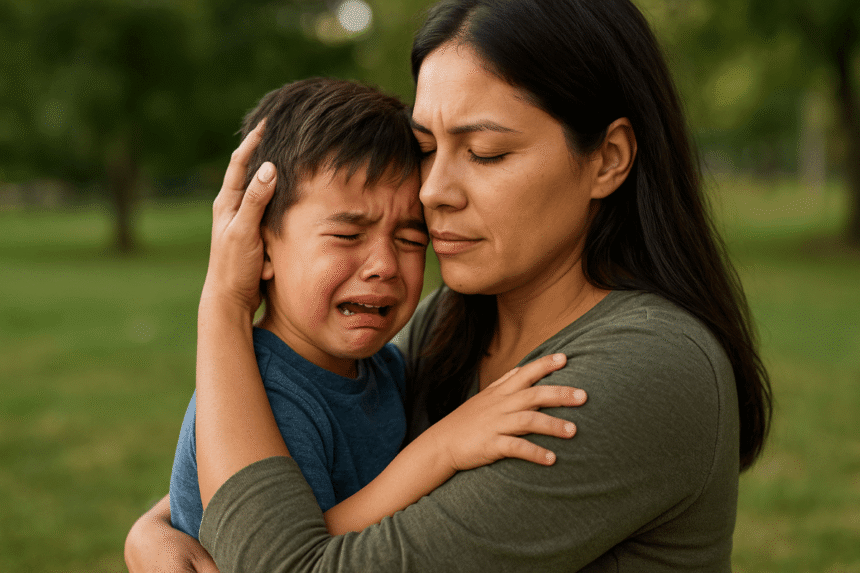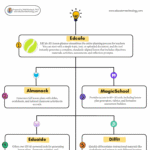Building emotional resilience in children is one of the most powerful investments parents can make in their child’s future. Emotional resilience — the ability to adapt, recover, and learn from challenges — helps children cope with disappointment, frustration, and uncertainty.
While academic success and social skills are often emphasised, emotional strength is the foundation that allows kids to stay calm, think clearly, and keep going when life gets tough.
The Importance of Building Emotional Resilience in Children
Emotional resilience equips children to face difficulties without becoming overwhelmed. Instead of avoiding emotions, they learn to acknowledge, process, and move through them.
For instance, when a child loses a match or receives a poor grade, the first instinct might be to cheer them up or shift focus. But when parents let children feel sadness or frustration — while offering empathy and reassurance — they teach them that emotions are temporary, manageable, and safe to experience.
Children raised this way grow into emotionally intelligent adults who handle stress constructively, maintain perspective, and connect deeply with others.
The Benefits of Building Emotional Resilience in Children
- Greater Emotional Awareness: Children understand and name their feelings accurately.
- Stronger Problem-Solving Skills: They pause, think, and respond rather than react.
- Healthier Relationships: Emotional understanding improves empathy and communication.
- Academic and Social Success: Calm, focused children learn and collaborate more effectively.
- Better Mental Health: Resilient kids are less anxious and more optimistic.
A Story That Speaks Volumes
One evening, a father and his little boy walked through a quiet neighbourhood. The child was crying, visibly upset. His father, trying to stay in control, said, “Stop crying, or your mother will hear about this when we get home.”
A few steps behind them, another parent and child witnessed the moment. After a while, the six-year-old observer asked thoughtfully, “Why did that dad tell the boy to stop crying? You can’t just stop crying when there’s a reason. You have to get the tears out.”
That innocent question reveals a deep truth — emotions cannot simply be switched off. When parents allow children to express their feelings instead of silencing them, they nurture emotional authenticity and resilience. Tears aren’t a weakness; they’re a release that helps healing begin.
Effective Strategies for Building Emotional Resilience in Children
1. Validate Their Feelings
Children need acknowledgement, not dismissal.
Instead of “Don’t cry,” try:
- “I can see this really hurt you. Want to talk about it?”
Validation gives emotional safety and shows children their feelings are normal.
2. Teach an Emotional Vocabulary
Encourage children to name emotions — sad, angry, scared, or excited.
Example: “It’s okay to feel disappointed when something you love breaks.”
Naming emotions helps them manage feelings with clarity.
3. Model Calm Behaviour
Children learn how to handle stress by watching adults.
Example: “This traffic is frustrating, but getting angry won’t help. Let’s listen to music instead.”
Your calmness becomes their emotional anchor.
4. Encourage Problem-Solving
Guide children to find their own solutions instead of fixing everything for them.
Ask:
- “What do you think could help next time?”
This builds independence, confidence, and resilience.
5. Create Emotional Safe Spaces
Allow moments for open sharing — bedtime conversations, walks, or car rides.
A consistent safe space tells children that expressing emotions is always welcome.
Parenting With Empathy And Emotional Intelligence
6. Reframe Challenges as Lessons
Teach children to view setbacks as opportunities to grow.
Example: “You didn’t win this time, but you learned what to improve.”
This perspective builds perseverance and optimism.
7. Practice Mindfulness and Gratitude
Daily gratitude reflections or breathing exercises strengthen emotional balance.
Tip: Use a “gratitude jar” where kids write one good thing that happened each day.
Building young children’s capacity for resilience, thereby reducing the effects of significant adversity or toxic stress on early development, is essential to their lifelong health and well-being. Research has shown that some children develop resilience, or the ability to overcome serious hardship, while others do not. Understanding why some children thrive despite adverse childhood experiences is critical, as it can inform policies and programs to help support children and caregivers in coping with, adapting to, and even preventing adversity in their lives. Credits: A Guide to Resilience
Conclusion
Building emotional resilience in children doesn’t mean keeping them from pain — it means guiding them through it with compassion. When parents validate emotions, stay patient, and allow tears, children learn that feelings aren’t threats but part of being human.
Emotions are like waves: they rise, fall, and fade. The goal isn’t to calm the ocean but to teach children how to surf it — with strength, confidence, and grace.
5 FAQs – Building Emotional Resilience in Children
1. What is emotional resilience in children?
It’s the ability to understand, manage, and recover from emotional challenges while maintaining a positive outlook.
2. Why is building emotional resilience in children important?
It helps kids handle stress, develop confidence, and build emotional intelligence for lifelong success.
3. How can parents help children build resilience?
By listening, validating emotions, modelling calmness, and guiding them to solve problems independently.
4. Should children be allowed to cry freely?
Yes. Crying is a natural emotional release that helps children process feelings and return to balance.
5. Can emotional resilience be taught at any age?
Absolutely. Whether a child is a toddler or a teenager, emotional resilience can be nurtured through empathy and open communication.
10 tips for building resilience in children and teens
Thank you for taking the time to explore this post. I hope you found it both insightful and enjoyable.
Remember, your sharing can make a positive impact! Please share this post across your social media and other networks, allowing others to benefit from its content.
PVM

Mathukutty P. V. is the founder of Simply Life Tips, a blogger, content writer, influencer, and YouTuber passionate about learning and sharing. Guided by “Simple Living, Creative Thinking,” he believes in the power of knowledge sharing and lifelong learning.
Related
Discover more from Simply Life Tips
Subscribe to get the latest posts sent to your email.







